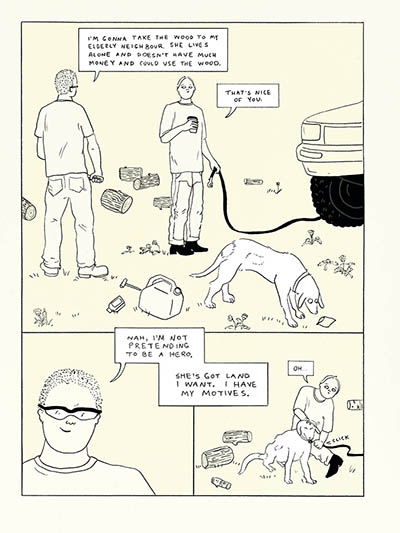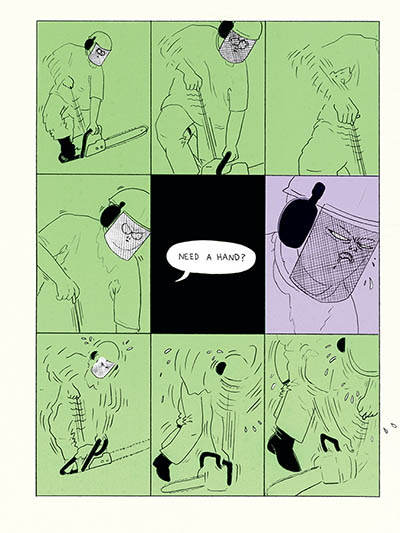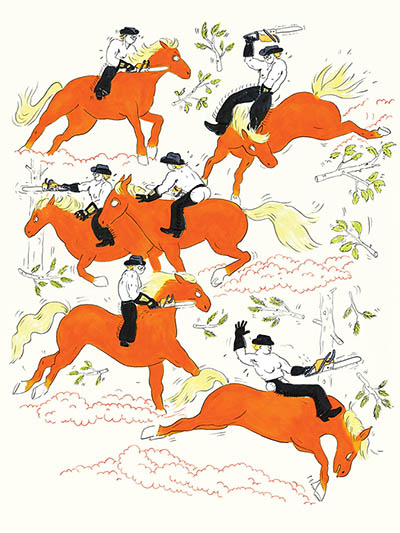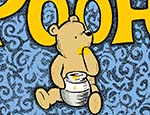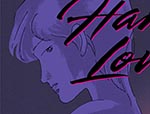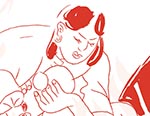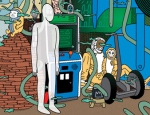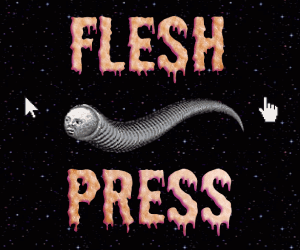What do cowboys look like? Can nonbinary people survive on their own in the woods? How are gender roles assigned? These are some of the questions that popped into my mind during my first reading of Sig Burwash’s powerful, bittersweet debut, Vera Bushwack. By my second reading, the subtlety with which the questions had been framed within the narrative began to appear, along with a profound respect for how Burwash shines a light on ideas that don’t grace the comics space as often as they should.
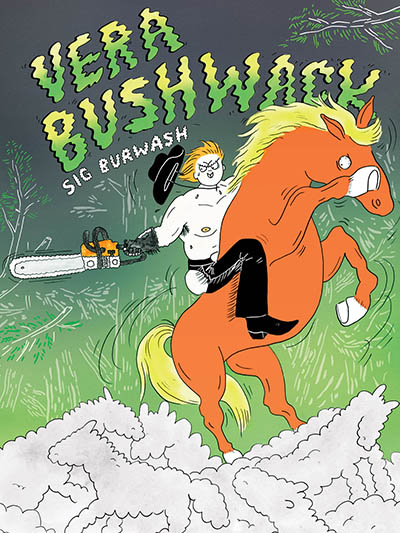
Shouldering the burden of these heavy queries is the book’s likeable nonbinary protagonist, Drew. Trying to build a life of their own in the woods, they are coming to terms with past relationships, absent friends, an unending stream of microaggressions, and societal failure to accommodate anyone who refuses to conform. It makes for a story that wears its intelligence lightly, and with effortless humour.
All Drew wants is a cabin, a safe space to live with their dog Pony, and some form of human connection to keep loneliness at bay. It sounds like a reasonable ask, until one realizes that even building something with one’s hands is easier said than done when there are men to contend with. Some pretend to offer unconditional help while their motives are suspect, others find the idea of anyone who isn’t male wielding a chainsaw risible, while still others wonder why anyone should live without a man around. Drew’s personal history, drawn out by gently interspersing past episodes with their present circumstances, shows just how difficult it is to fulfil that seemingly simple wish for self-sufficiency.
There are moments that shock in these pages, less by the mention of specific incidents than by the recognition of how pervasive they are, and how misogyny is taken for granted. They show how society has different rules in place for anyone who doesn’t identify as male, even at an early age. Eventually, one realizes that Drew isn’t just building a cabin; they are rebuilding their sense of self while tearing down a few other metaphorical walls.
The biography on Burwash’s website describes their work as ‘both imaginative and rooted in their lived experience, including cabin building, forest stewarding, motorcycling and crewing on a fishing vessel.’ That comes through in the art, and the authenticity with which Drew rides a bike, cuts down trees, or sharpens a chainsaw, all while subverting the male fantasy of life as a cowboy.
The idea of masculinity has evolved over the recent past, with more conversations being had about why so much of it glorifies sexual conquest, or violence. One could argue that the MeToo movement helped draw more attention to gender dynamics and the need for accountability, and there are now programs and social justice groups engaging with what some loosely call a ‘healthy masculinities’ movement. Burwash’s book is a powerful reminder that reshaping how men define and embody manhood is a constant endeavour, long overdue in some parts of the world more than others.
What made my experience of Vera Bushwack particularly interesting was the emergence of a video on TikTok, asking eight women whether they would rather be stuck in a forest with a man or a bear. Seven of the women answered “bear,” and everyone on the Internet jumped in to list a million reasons why they agreed. I would list Vera Bushwack as one more reason.
Sig Burwash (W/A) • Drawn & Quarterly, $29.95
Review by Lindsay Pereira





